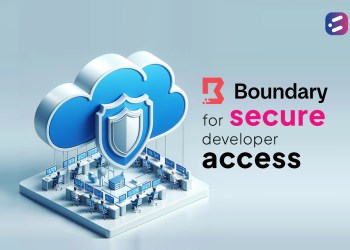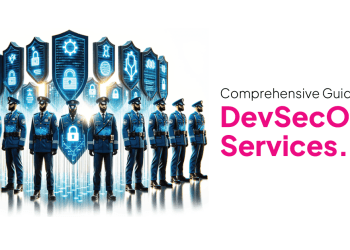Migrating your on-premise applications to the cloud has become a vital component of business competitiveness. Today, every company is a tech company, and you simply can’t afford to be left behind in the technology race.
But while migrating to the cloud may sound like a straightforward decision, if you don’t get it right, the result can easily be data loss, security breaches, downtime, high costs, and overall business disruption.
Working with a Cloud Managed Service Provider (MSP) is the best way to avoid the pitfalls of cloud migration and maximize value on your cloud journey.
Your MSP acts as an extension of your IT team, meaning they bring together an in-depth understanding of your business needs with extensive experience and expertise in migrating applications to the cloud. Here are the key areas where your MSP can help you migrate seamlessly to the cloud.
- Evaluating your current infrastructure
- Developing the right cloud strategy
- Selecting the right cloud platform
- Planning for data security and compliance
- Managing costs and maximizing ROI
- Executing the migration
- Training and change management
- Post-migration optimization and maintenance
1. Evaluating your current IT environment before cloud migration
Your managed service provider’s first step is a thorough assessment of your existing IT infrastructure. Here’s why this is important. :
- By studying the lay of the land, your MSP can gain a better understanding of the different infrastructure components active in the existing on-prem environment. This helps understand present configuration, capabilities, and limitations.
- Similarly, by examining the applications and data to be migrated, your MSP gains a clearer picture on how ready the application is for migration, whether any of its components require re-architecture or modernization prior to the migration, and how data mapping needs to be managed to ensure a lossless transition.
- Application integrations are another key aspect that needs to be clearly understood so that the connections continue to function seamlessly post-migration.
2. Developing the right cloud migration strategy
A cloud strategy roadmap outlines the processes involved in cloud migration and provides a path to help you reach your desired outcome. This involves taking the evaluation of your current environment as the input to understand your current state of operations, bottlenecks you face, resources currently being used, and so on.
The right cloud strategy for migration, as your MSP will tell you, depends on several factors such as enterprise risk, capability, cost-benefit, and accountability. Developing the right strategy involves selecting the right migration method. This typically involves making a choice from the 5Rs – Rehost, Re-architect, Re-platform, Re-build, and Replace, as appropriate for the business. The cloud strategy also involves detailed planning to mitigate risks identified in the evaluation stage.
3. Selecting the right cloud platform
Gartner data on the worldwide Infrastructure as a Service market shows that the market is dominated by five vendors who account for about 65% of the worldwide infrastructure as a service (IaaS) cloud market in 2023 — Amazon Web Services (32%), Microsoft Azure (22%), Google Cloud (11%).
But which platform do you choose? This largely depends on cloud costs (including acquisition and operational costs), security features, scalability, compliance and regulatory requirements, and any other specific needs you have. With their understanding of your business and knowledge of the strengths if each cloud provider, your MSP has an important role to play in helping you select the right cloud platform.
4. Planning for data security & compliance after application migration
Data security and compliance are key factors when formulating a cloud migration strategy. Did you know that a 2023 report by Thales found that 39% of businesses experienced a data breach in their cloud environment, an increase of the 35% reported in 2022? Despite the reported increase in sensitive data in the cloud, the study found low levels of encryption being used and a lack of control over encryption keys by businesses.
MSPs can help you implement encryption, identity and access management, and monitoring with services that include firewalls, data encryption, malware protection, and vulnerability scanning. Managed service providers also help you build a compliance-centric cloud strategy that ensures you have the appropriate safeguards in place to comply with your specific industry or governmental standards.
5. Managing costs & maximizing ROI in your cloud migration strategy
Cloud RoI is a key metric in cloud economics. It measures the impact of a cloud investment on your organization.
Calculating the RoI for your cloud migration would include evaluating the impact of the migration on infrastructure and operating costs, and business productivity and scalability. It also takes into consideration the cost of project failure, infrastructure outages, and natural disasters, along with mitigation strategies in terms of disaster recovery solutions.
At the end of the day, cloud migration is not about ticking a box on a list – it is about creating business value, and that’s why cost management is crucial to ensure the project is profitable.
6. Executing the application migration to the cloud
This is where it all comes together. MSPs make use of specialized tools and finely-tuned processes to ensure a seamless migration. With their experience on different cloud platforms, your MSP is well placed to manage resource allocation, and configuring networks and routing on your cloud infrastructure.
Depending on the criticality and scale of the application and data being migrated, an appropriate migration method is utilized to strike a balance between minimizing downtime and eliminating risks.
The execution phase also involves implementing appropriate security measures on the cloud platform, configuring monitoring tools for complete visibility of performance and security, and setting up alerts and notifications as required.
7. Training and change management
Moving to the cloud is a major undertaking, and it doesn’t end with implementing the migration.
Your in-house IT team needs to be trained and familiarized with the new cloud platform and architecture to enable them to transition to day-to-day operations on the cloud. This often requires training of members of your team to build capabilities and confidence in the cloud environment.
Your managed service provider is the ideal partner to impart this training, hand-hold your team through operations in the initial days and weeks after migration, and create detailed documentation for the migrated application to enable efficient management going forward.
8. Post-migration optimization and maintenance
The migration journey doesn’t end with deployment, post-migration optimization and maintenance are just as crucial. Without proper testing and security protocols post-migration, data could be compromised. Choose an MSP that offers ongoing support, monitoring, and optimization services to ensure the cloud environment operates at peak efficiency.
Close monitoring is also called for to enable optimization of performance and cost. Optimization is enabled through automations for scaling up or down to meet user demand in real-time, notifications to ensure cloud spending stays within budget, and analytics such as cost reports and traffic variations, to name a few. A study shows that automation can lead to many other benefits, like improved time efficiency (42%), reduced errors (34%), and increased profits (33%).
As a trusted long-term partner, your MSP is the ideal choice for ongoing maintenance and optimization of your application on the cloud.
If you are considering migrating your applications to the cloud, work with an experienced MSP to make your transition from on-premise to the cloud seamless. Managed service providers such as CloudNow can help you develop a solid migration strategy, manage costs, and enhance security. Talk to us today.













